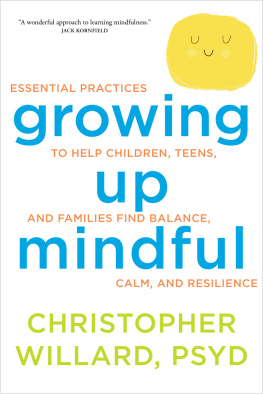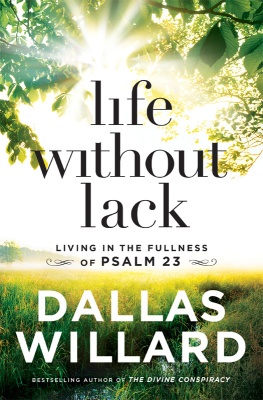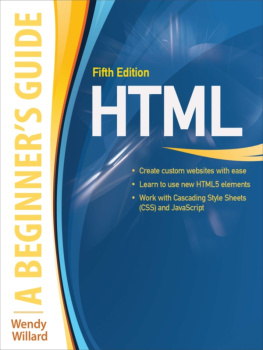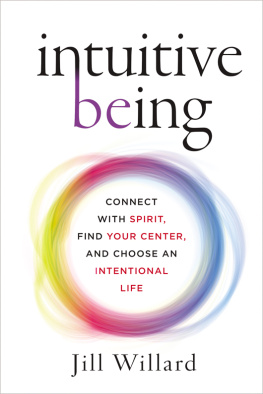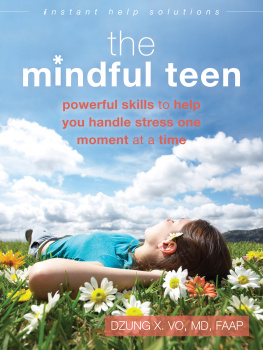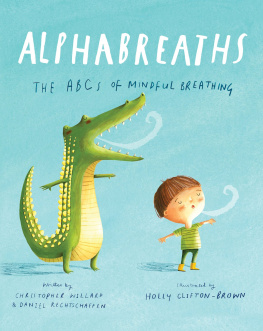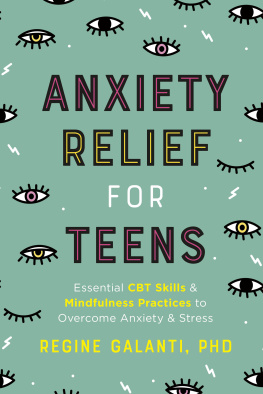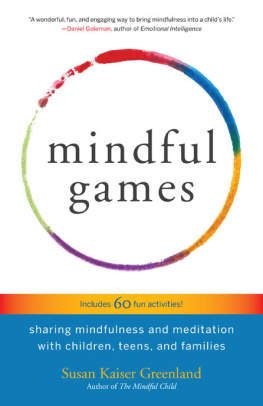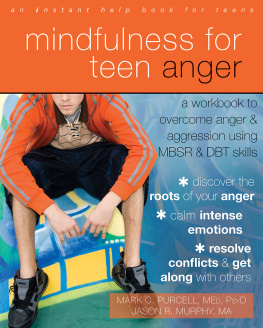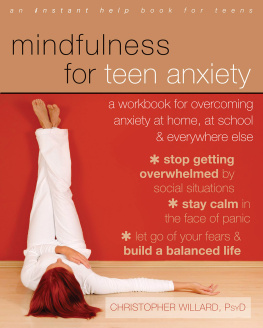
For Leo
There can be no keener revelation of a societys soul than the way in which it treats its children.
NELSON MANDELA
opening words of his speech at the launch of the Nelson
Mandela Childrens Fund in Pretoria, South Africa, May 1995
contents
preface
By picking up this book, you are embarking on something incredible and world-changing. And wherever you are and whatever you might be feeling, you are not alone. You are joining the growing movement to bring wonder, curiosity, and reflection back into childhood, from which they have been slowly disappearing. This book and others like it exist because there is an audience, a community of others who, like you, want to help the next generation live more fully and compassionately. A Chinese proverb says, One generation plants the seeds; the next enjoys the shade. It starts with you; it starts with us. So whether you are a parent or a professional, thank you. I am honored to be a part of this journey with you and others who are quietly planting and watering the seeds of mindfulness in their communities.
introduction
Meditation is a microcosm, a model, and a mirror. The skills we practice when we sit are transferable to the rest of our lives.
SHARON SALZBERG, Real Happiness

Mindfulness with kids doesnt have to mean twenty minutes of quietly sitting on a meditation cushion. In my time as a teacher, therapist, and parent, Ive seen hundreds of kids of all ages and backgrounds practice mindfulness, and each kids mindfulness practice looks as different as the kids themselves.
For seven-year-old Jackie, who struggles with ADHD and divorcing parents, it means playing with stuffed animals on the floor until either she or I ring a bell, and then we both take three mindful breaths. With Alexa, a curly-haired teen who struggles with food, mindfulness means tuning in to her bodys signals, so she can respond to what her body, not her emotions, tells her she needs to eat. For burly Jared, an athlete who fears panicking on the lacrosse field, it means doing a quick body scan during a game and bringing his awareness to the soles of his feet when he senses his anxiety rising. For Ellie, who first came to my office at age twelve for chronic pain related to a childhood illness, it means sitting quietly on a cushion with the meditation club at school and trying her first teen mindfulness retreat for her own spiritual development.
For a classroom teacher, mindfulness might mean offering kids a focused listening practice to do before state exams; for a therapist, it might mean having the client draw while engaging all of their senses in the process. For me, until my son was born, it meant meditation retreats and Wednesdays at a meditation center. Now it means noticing my joys and fears about his future and the world he will enter arise as I watch him at rest or at play.
No matter how we practice it, mindfulness offers the gift of calm and clarity when difficult times arise, which they inevitably will, no matter how hard we try to protect our children. The world is not always a compassionate place; they will get hurt, if they havent been already. But if we teach them, they can discover that their greatest challenges can be the greatest teachers. One of the gifts of mindfulness is that it transforms lifes inevitable pain into wisdom and compassion. The great philosophers all speak of pain as the touchstone of spiritual growth. If we want our kids to grow and flourish rather than be stunted by lifes challenges, we must offer them the tools to work with suffering.
Human beings need to experience some degree of pain in order to develop compassion, and life is guaranteed to give it to us. Contemplative practices like mindfulness allow kids to heal and soothe themselves rather than distract themselves from the pain. Kids need to get hurt, scrape their knees, bomb the occasional test, cry over their first heartbreak, and see that they can survive and grow from the experience. And when they share their experience with others, they too can alleviate suffering in the world.
Although many people associate mindfulness with Buddhism, you dont have to be Buddhist, religious, or even spiritual to practice mindfulness or appreciate how it can help us all, personally and collectively. The story of the historical Buddha is essentially the tale of an overprotected child, with high-powered helicopter parents who outsourced their parenting to keep their child protected, sheltered, and safe so that he would be prepared for a stable, predictable adulthood. It was only when the young man encountered suffering in the world that he began a lifelong quest to end suffering, which he found through wisdom and compassion practices. Jesus transformed his suffering into salvation for all humanity. Judaism seeks to transform the suffering of a people into finding meaning and healing a wounded world. Other religions and philosophies seek to transform and transcend earthly challenges.
The psychological research on mindfulness shows that it greatly enhances what psychologists call flourishingthe opposite of depression, avoidance, and disengagement. Mindfulness builds emotional intelligence, boosts happiness, increases curiosity and engagement, reduces anxiety, soothes difficult emotions and trauma, and helps kids (and adults) focus, learn, and make better choices.
In our distracted world, the default reaction to stress, unpleasant experiences, or even just neutral experiences is to check out. Dont like how you feel inside? Bored with where you are in the present moment? Check out with something outside of yourselfwatch a video, play a game, check your Twitter feed, scroll through Instagram. A recent study found that young men would rather receive ten minutes of low-level electric shocks than spend ten minutes alone with their thoughts, without their electronics. Taking drugs, cutting themselves, and acting out are other ways kids check out of their immediate experience. When we teach children to disconnect from their experience from a young age, its no wonder they struggle with their emotions.
Mindfulness and compassion practices go radically against this cultural conditioning by emphasizing checking inwith our experience, with ourselves, and with the world around usrather than checking out. Over time, kids learn to tolerate their experiences, whether they are comfortable or not, and come to see that everything in the range of human experience, pleasant or unpleasant, loved or loathed, eventually passes. Over time, through the lens of mindfulness, they may even become curious about their experience, their triggers, and their automatic responses. Teaching children to check in with, rather than check out of, their experience builds emotional intelligence, leading to happier kids and families. And the benefits can go viral through communities, leading to happier classrooms, schools, hospitals, and mental health clinicsand ultimately, to a happier, more compassionate future for humanity.
In fact, some of the most exciting research in mindfulness shows that these practices are helpful not only for the kids in your life. They can also help you be calmer, less burned out, less reactive, more present, and more effective as a parent or partner or professional. This is one of the most precious gifts of mindfulness practice: that what we practice ourselves, physically, emotionally, spiritually, personally, and professionally, helps others.
About This Book
In working with young people over the last few decades, Ive discovered that mindfulness can be learned by anyone, from young children with significant disabilities to rebellious adolescents. I have seen that they all can practice and all can benefit from even a small dose of mindfulness. Thats why this book contains more than seventy practicesso that you can find at least a few that work for you and your kids. Each one has been road-tested by me, other parents, therapists, teachers, and, most importantly, by actual kids. Whats more, you dont have to be an expert. Simple practices can be shared with kids by anyone with an authentic and openhearted intention.
Next page
